Semantic SEO is one of the most important aspects of search engine optimization.
It’s all about understanding how Google interprets your website content and providing users with the information they are searching for.
This guide will discuss what it is, why it matters, and how you can use it to improve your rankings.
Contents:
What is Semantic SEO?
Semantic SEO is the practice of optimizing your website around topics, not just individual keywords.
It’s about creating content that is comprehensive, well-researched, and relevant to your audience.
For example, if you are writing about blogger outreach, you want not only to cover the entire process of searching, segmenting, and contacting bloggers but also outreach templates and the best ools as I did in my guide:
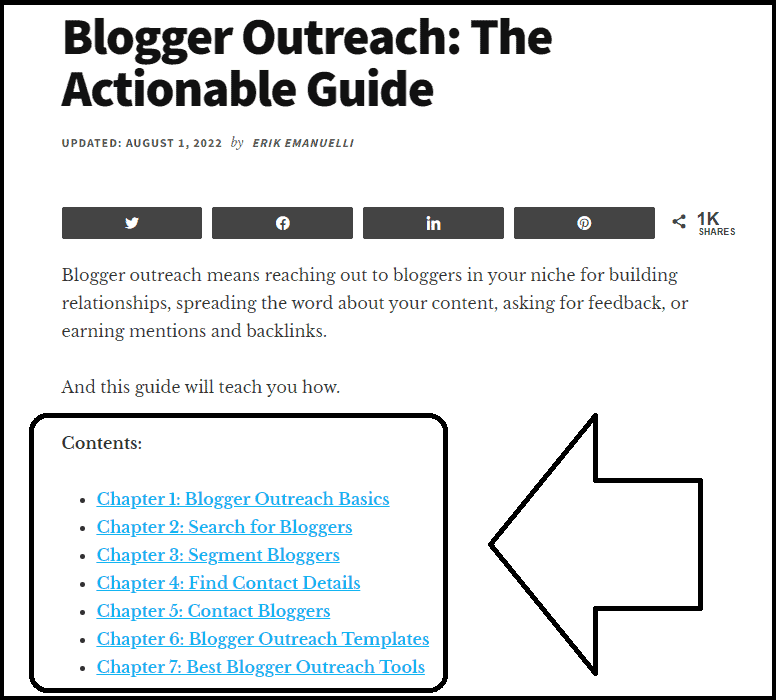
Why is Semantic SEO Important?
Google used to evaluate pages only based on keywords. But now, Google’s semantic search algorithm looks at the overall meaning of a page to determine its relevance.
In other words, it’s not about optimizing your content around a single term. But instead, writing about a broad topic that covers all the related queries and questions users can have.

Some of the most important steps to do so were:
- Knowledge Graph. In 2012, Google launched the Knowledge Graph, which is a semantic system that understands real-world entities and the relations between them.
- Hummingbird. In 2013, Google released Hummingbird, an algorithm update that marked a shift from keyword-based to semantic-based search.
- RankBrain. In 2015, Google announced RankBrain, a machine-learning artificial intelligence system that helps interpret searcher intent and match it with the most relevant results
Today, semantic SEO is important because it helps you rank better in search results.
When you create content that is comprehensive and relevant to your audience, you are more likely to rank better than if you simply stuff your pages with keywords.

This is because when you write about topics in-depth, you are providing readers with valuable information that they are likely to want to share with others.
As a result, your content is more likely to be shared on social media or linked to other websites, which can help you attract even more traffic.
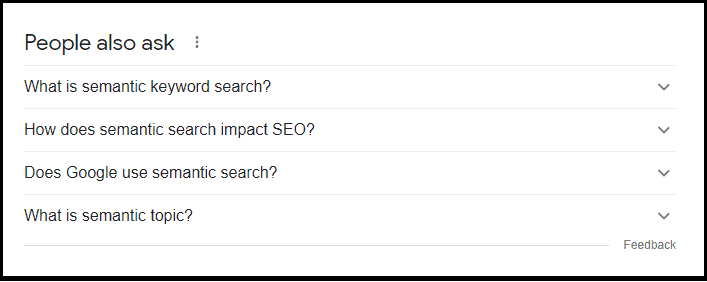
Best Practices for Better Rankings
Here are some of the best practices to follow to create content for better rankings:
- Cover the Topic In-Depth
- Optimize For Keyword Clusters
- Answer People Also Ask Questions
- Write Topic Outlines
- Use Related Terms and Synonyms
- Publish Long Content
- Include LSI Keywords
- Add Structured Data
Cover the Topic In-Depth
The first step to semantic SEO is to make sure that you are covering the topic in-depth. This means going beyond the surface level and delving into the details.
For example, a few months ago I targeted these keywords in an article I wrote: “On-page SEO“.
I could have written the usual “8 Ways to Optimize Your Content for SEO”.


Optimize For Keyword Clusters
Keyword clusters are groups of related words that are all semantically connected.
So when creating new content, you should target them, instead of single query.
An example of the topic of “page speed” could be:
- What is Page Speed?
- Page Speed Concepts
- Why Is Page Speed Important for SEO?
- What is Google Recommended Page Load Time?
- How To Measure Page Speed?
- How to Improve Your Page Speed?
- My Experience With Page Speed
- Page Speed FAQs
When you optimize for semantic SEO, you are offering users a better experience, delivering added value to your content.

Answer People Also Ask Questions
People use search engines to find answers to their questions.
One way to find them is via the “People Also Ask” section on the result pages.
So, it just makes sense that you would want to answer those questions in your content.
According to a recent study, “People Also Ask” is the most popular Google search feature, appearing in SERPs more than 48% of the time.
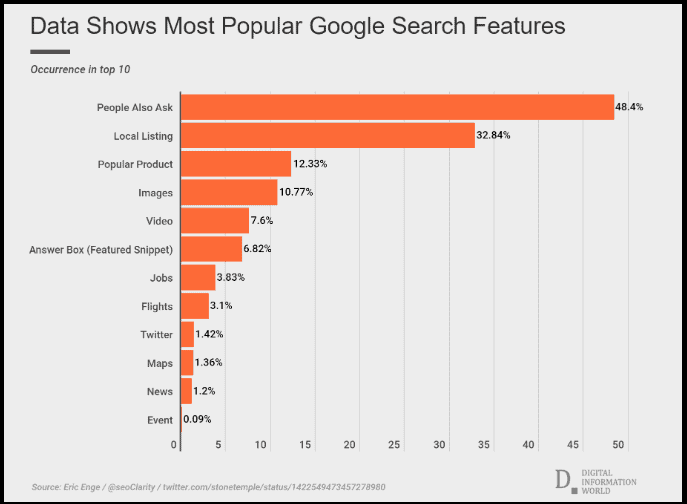
Write Topic Outlines
A great way to organize your content and make sure you are covering all the bases is to write topic outlines before you start writing.
A topic outline is a list of all the subtopics or subheadings that you want to include in your article.
This can be a helpful way to brainstorm ideas and make sure you don’t forget anything important.


Use Related Terms and Synonyms
When you are writing about a certain subject, it’s important to use related terms and synonyms throughout your content.
This helps Google understand the context of your article and can also help you rank for more keywords.
To find related terms, you can use a free tool like GKP or the Keyword Surfer Chrome extension.

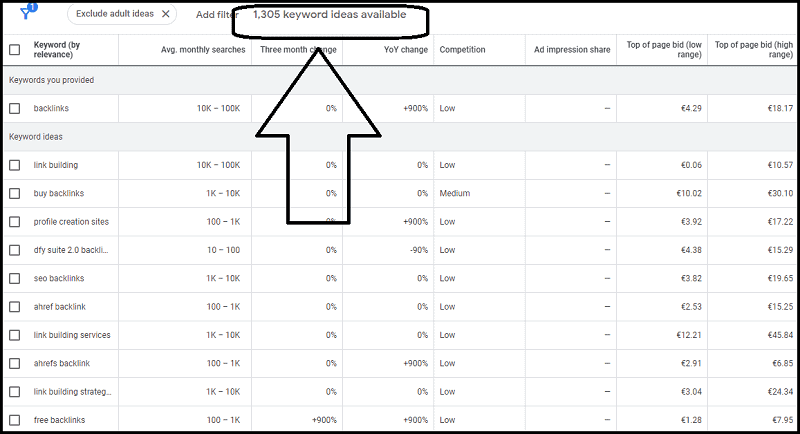
Publish Long Content
Do you know that, on average, the first page of Google search results contains 1,447 words?
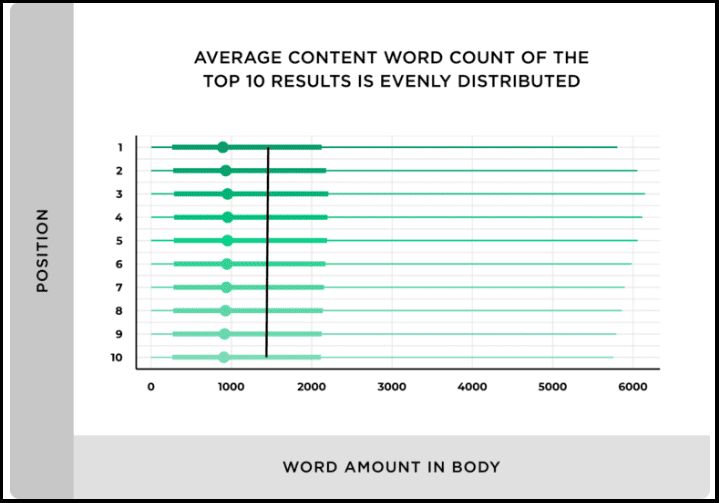
This SEO statistic comes from Backlinko research and teaches us that one of the best things you can do to retain users on your site is to publish long-form content.
In general, longer articles tend to rank higher in search results because they are usually more comprehensive and in-depth.
It’s almost impossible to fully cover a topic in a 500-word blog post. Many of the best-ranking articles are around 3/4,000 words.

Include LSI Keywords
LSI (Latent Semantic Indexing) keywords are related terms that help Google understand the context of your article.
By adding them sparingly to your content (including in meta tags), you can improve your semantic SEO and your chances of ranking for additional keywords.
You can use the Google autosuggest feature to find LSI keywords or tools like Answerthepublic:
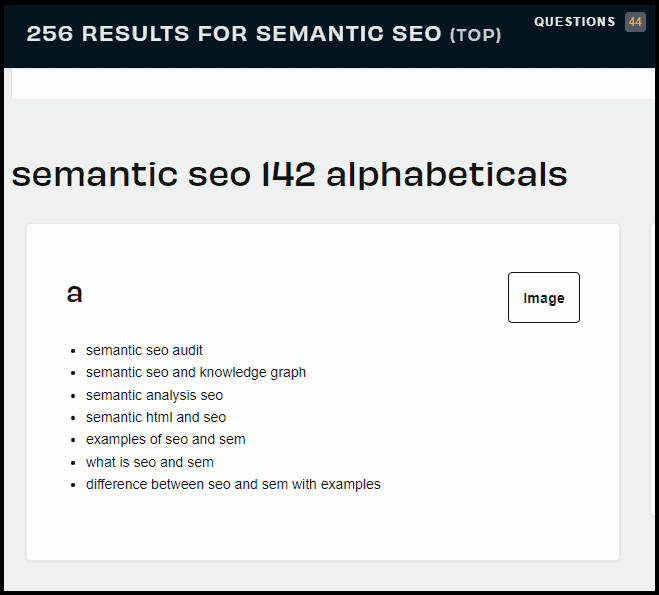
You can do the same procedure also when you refresh old articles.
Add Structured Data
Structured data is code that helps search engines understand the contents of your page.
Adding it to your website can improve your semantic SEO and make it easier for Google to display your content in rich or featured snippets.
This may help increase your organic CTR:

Semantic SEO FAQs
Q: What is an example of semantic SEO?
A: An example of semantic SEO would be optimizing for keyword clusters instead of individual keywords.
Q: What is semantic search SEO?
A: Semantic search SEO is optimizing your content for meaning, rather than just individual keywords.
Q: What is the difference between SEO and semantic SEO?
A: The main difference is that semantic SEO focuses on topics and related keywords, instead of just individual keywords. It also takes into account the context of a query, so you need to use related terms throughout your content to ensure Google understands the meaning.
Q: How do I apply semantic SEO to different niches?
A: Semantic SEO can be applied to any niche. To do this, you need to research related topics and keywords, target the search intent, and produce content that matches it. Additionally, you can use features like structured data or AnswerThePublic to help search engines better understand the contents of your page.
Q: What are some semantic SEO tools?
A: Some of the best semantic SEO tools include Google Keyword Planner, Keyword Surfer Chrome extension, and Structured Data Markup Helper. These tools can help you research related topics and keywords, optimize for search intent, add structured data to your page, and more.
Q: Is semantic SEO the same as the topical authority concept?
A: Yes, semantic SEO is closely related to the topical authority concept. This concept refers to optimizing for a broad topic or theme instead of individual keywords. In short, you need to focus on topics and related terms throughout your content instead of just targeting one specific keyword.
Before You Go
Covering the topic in-depth is good both for readers and search engines.
But wait! Optimizing the user experience does not end here.
You want visitors to spend a long time on your site:
And, you want to work on the technical aspect of SEO:
Now, it’s over to you.
What are your thoughts on semantic SEO?
Have you used it to improve your content?
Let me know in the comments below!

Creating detailed blog posts makes the difference for your semantic SEO campaign. I am glad that you mentioned that. Too many bloggers list sound SEO tips but forget the most important practical tip. Publishing in-depth content positions your post on page one of Google more than any other factor. Scanning page one for any keyword reveals this in most cases.
It’s incredible how much you can learn by digging down into topics.
Researched and in-depth content is the one that users and Google love.
Thanks for your support, Ryan.
Always my pleasure, Erik!
RB
Great tips, Erik!
I always create an outline before writing my blog posts to make sure I have covered all the key questions the post should answer.
In fact, if you write in-depth content, somehow the semantic keywords get added in by default as you are really explaining something. Even if you don’t intentionally put semantic keywords in.
But that may not happen for shorter blog posts of like 1000 words. So long content helps your SEO in multiple ways!
Exactly, Poulomi.
That’s why content creators should focus on covering the topic in-depth when writing something new.
I appreciate your positive feedback!
Hi Erik,
Every time I come to your blog, there is another great read. So much information in great detail. Semantic SEO is vital to get the best out of your copy. Thank you
Thanks for the great comment, Barrie.
I’m glad to read you liked this semantic SEO guide.